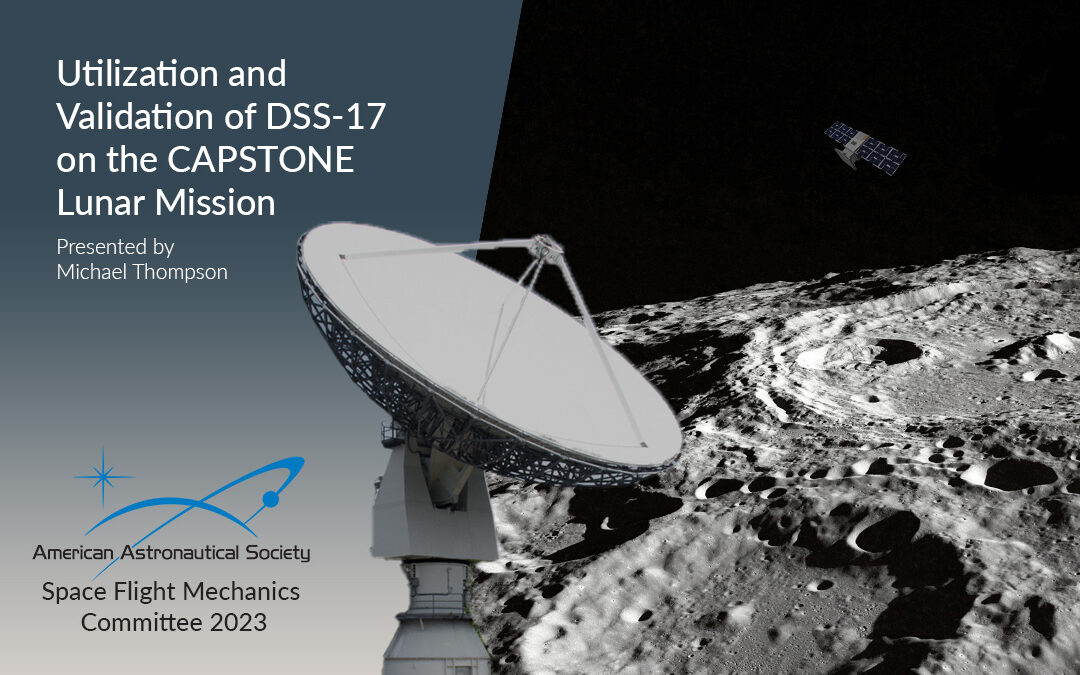Presented at the 33rd AAS/AIAA Space Flight Mechanics Meeting
MichaelR. Thompson, and Mitchell Rosen
ABSTRACT
The Cislunar Autonomous Positioning System Technology Operations and Navigation Experiment (CAPSTONE) mission is an ongoing mission to serve as a pathfinder for cislunar operations and navigation for the Lunar Gateway and the greater Artemis program. As part of nominal operations, one of the tracking dishes that CAPSTONE utilizes is DSS-17 at Morehead State University. Through a series of necessary corrections, CAPSTONE has been able to generate radiometric measurements using this dish on the same order of noise magnitude as typical DSN measurements. This paper will provide an overview of the necessary processes and early performance of DSS-17 in CAPSTONE orbit determination.
Introduction
The Cislunar Autonomous Positioning System Technology Operations and Navigation Experi-ment(CAPSTONE) mission is an ongoing mission to serve as a pathfinder forcislunar operations and navigation for the Lunar Gateway and the greater Artemis program [1].One early contribution of the mission is assisting in the radiometric validation of DSS-17, the 21-meter deep space tracking dish at Morehead State University. This dish is partially integrated into NASA’s Deep Space Network, can be tasked by DSN schedulers, and TT&C is performed via nearly identical processes to any typical DSN dish [2].
In the past, the dish at Morehead State University had performed experiments with three-way tracking data using both the STEREO and DART missions, however, due to frequency licensing issues, DSS-17 was unable to transmit to either spacecraft. This meant that CAPSTONE was the first mission to generate and utilize two-way coherent data, the most typical form of cooperative deep-space tracking data, with DSS-17 [3]. The validation performed by CAPSTONE was an important step prior to the launch of Artemis I on November 16th, 2022, given that secondary payloads Lunar IceCube and LunaH-Map both planned on utilizing DSS-17 to supplement their DSN coverage [4]. CAPSTONE performed 18 tracking passes with DSS-17 over the course of its 4 month low energy transfer to the Moon before arrival at the Moon on November 14th. Since its arrival at the Moon, CAPSTONE has continued to utilize DSS-17 as a part of regular operations in the Near Rectilinear Halo Orbit (NRHO). The CAPSTONE trajectory from deployment to the end of 2022 is shown in Figure 1 withthe location of DSS-17 passes overlayed in green.

This paper summarizes the custom media calibration models and updated geodetics required to incorporate DSS–17 into nominal CAPSTONE flight dynamics and summarizes the performance of the radiometric observables thus far.
References
[1] Parker, J. S. et al. CAPSTONE: Pathfinder for the Lunar Gateway. in International Astronautical Congress (2022).
[2] Pham, T. et al. System Development and Spacecraft Testing of the Morehead State University Ground Station. in SpaceComm (2019).
[3] Pham, T. et al. Radiometric Validation of Morehead State University Ground Station. in ESA TT&C Workshop (2022).
[4] Babuscia, A., Angkasa, K., Malphrus, B. & Hardgrove, C. Development of Telecommunications Systems and Ground Support for EM–1 Interplanetary CubeSats Missions: Lunar IceCube and LunaH–Map. in International Astronautical Congress (2017).
